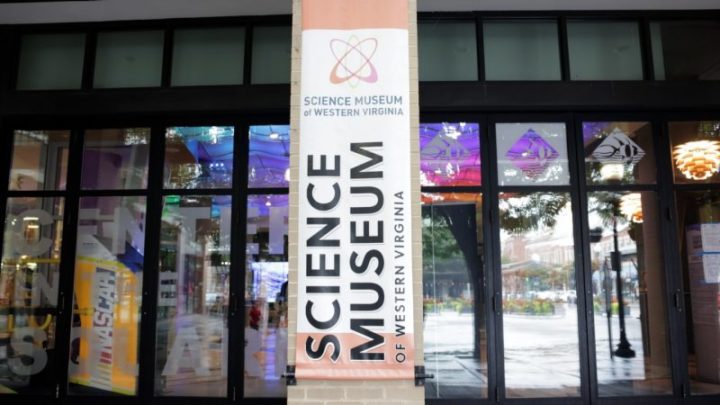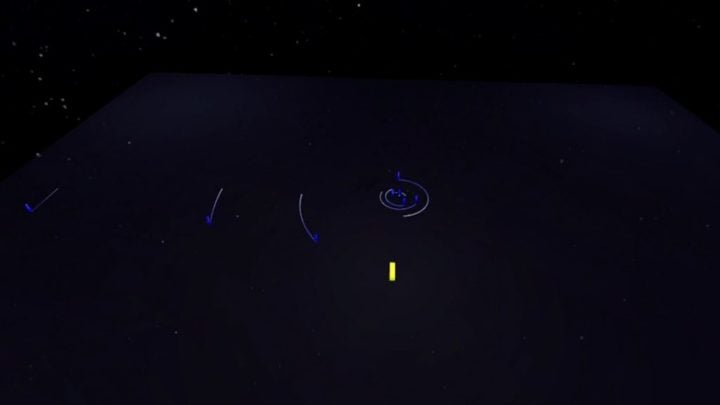A new method of exploration
Instead of using virtual reality headsets, this experience utilizes handheld tablets that serve as windows into the virtual space.
“When you’re wearing virtual reality goggles, you can’t engage directly with anyone else in the space with you. You can’t see them. You can’t talk directly to them easily or naturally. We wanted learners to be able to use normal social interaction as part of the learning experience,” Ogle said.

The Science Museum of Western Virginia is located in Roanoke. Photo by Chase Parker for Virginia Tech.
The virtual environment consists of a 30-by-30-foot space with four devices that track the location and orientation of tablet computers used by the students. Within this virtual environment, young learners can explore the solar system in pairs or solo, interacting with the content, the teacher, and one another while doing so.
Addressing misconceptions about space
The program’s developers created an immersive experience that accurately represents how the solar system functions. This means myth-busting some popular misconceptions.
“There are a lot of ideas that students have such as how big all of the planets are and how close they are to each other as well as how the moon phases truly work,” said Matthew Gallagher, computer engineering major and immersive developer on the project.
Users are virtually placed in the true-to-size solar system. When accurately presented, planets are impossible to see. The sun, which only takes up two pixels on the screen, is the only object visible to the human eye. To make sense of the black void, the developers placed arrows to point to where planets would be in their orbits.

A screenshot from the virtual solar system depicts the celestial bodies’ true scale and their orbits.
After the actual scale is established, the celestial bodies are enlarged to a size more supportive of active learning. Users are then placed into different scenes, such as the phases of the moon or the mechanism behind the ocean tides, finally having an opportunity to build their own planet.
“The kids love the planet-builder feature. They get to pick different attributes like whether it’s a rocky planet or a gas giant, orbit velocity, and where it is placed in our solar system,” said computer science major and immersive developer Clara McDaniel.
Source: VirginiaTech

